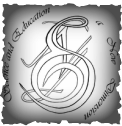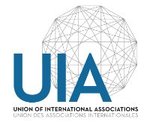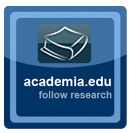Science and Education a New Dimension
Iss. 145. 2017.
N. Gorbachova Tactics of disagreement as a means of status modification (on the material of an English-language series ‘Suits’)
https://doi.org/10.31174/SEND-PH2017-145V41-01
Abstract. The article is devoted to analysis of dialogical speech between speakers with asymmetrical statuses in situation of role expectations violation. Specificity of tactics of disagreement used by a subordinate and its peculiarities are investigated. The subordinate’s ability to raise his own status and lower the chief’s status by using tactics of disagreement is grounded.
Keywords: dialogical speech, tactics of disagreement, asymmetrical statuses, chief, subordinate, speech act.
N. Gorbachova Tactics of disagreement as a means of status modification (on the material of an English-language series ‘Suits’)
O. Kalinichenko Stylistic aspects of musicality in literary text: a study of V. Woolf’s “To the Lighthouse”
https://doi.org/10.31174/SEND-PH2017-145V41-02
Abstract. This article focuses upon the analysis of key features of literary text musicality from a multimodal perspective. It examines the significance and further prospects of such research for contemporary stylistic studies with a special emphasis on the musical markers in V. Woolf’s “To the Lighthouse”.
Keywords: musicality, multimodality, multimodal stylistics, stylistic means.
O. Kalinichenko Stylistic aspects of musicality in literary text: a study of V. Woolf’s “To the Lighthouse”
Y. V. Krysalna Appeals to Christian values in modern cinema and advertisement within the framework of axiological shifts
https://doi.org/10.31174/SEND-PH2017-145V41-03
Abstract. The paper studies concept “CHRISTIAN VALUES” and sattelite concepts in media discourse, particularly in cinema and advertising. A pilot 3-level model of key components of concept of “Christian values” is developed. The tendencies of possible cognitive modifications of religious concepts in appeals to Christian values are outlined.
Keywords: religious concept, axiology, axiological shift, cognitive modification, Christian values, media discourse.
Y. V. Krysalna Appeals to Christian values in modern cinema and advertisement within the framework of axiological shifts
O. V. Kuznietsova The role of the creolized text in Dave Barry’s comic idiodiscourse
https://doi.org/10.31174/SEND-PH2017-145V41-04
Abstract: The article substantiates basic postulates of idiodiscourse as specific self-expression of the author. The paper explores comic idiodiscourse of a modern American writer Dave Barry which is explicated by a combination of verbal and non-verbal elements. The au-thor’s creative manifestation is shown up in particularities of chapter structures, front covers, as well as linguistic tools common for D. Bar-ry’s idiodiscourse being his “visiting card”.
Keywords: comic idiodiscourse, creativity, creolization, creolized text, front cover, idiodiscourse.
O. V. Kuznietsova The role of the creolized text in Dave Barry’s comic idiodiscourse
O. M. Los Features of the entries of Russian-Ukrainian dictionaries of the 1920's.
https://doi.org/10.31174/SEND-PH2017-145V41-05
Abstract. The article describes the components of the microstructures of the Russian-Ukrainian dictionaries of the 1920s. Their features were analyzed, the common features and differences in the construction of the entries were established. M ost of Russian-Ukrainian dic- tionaries of the 1920’s had a small microstructure composed with a lemma and a translation equivalent. Synonyms, dictionary grammar, labels and illustrations were not used widely.
Keywords: Ukrainian language, dictionary, academic dictionary, translating dictionary, microstructure of a translating dictionary.
O. M. Los Features of the entries of Russian-Ukrainian dictionaries of the 1920’s.
D. Lytovchenko Stereotyping of Muslims in the mass-media of Australia and New Zealand
https://doi.org/10.31174/SEND-PH2017-145V41-06
Abstract. The article reviews the specific features of ethno-cultural stereotyping of Muslims in the printed media of Australia and New Zealand, investigates linguistic realization of positive and negative Muslim stereotypes, and analyzes linguistic and extra-linguistic means of ethno-cultural separation of Muslims by the representatives of Australian and New Zealand community.
Keywords: stereotype, stereotyping, ethno-cultural stereotype, Muslim stereotypes Islam, bias, media discourse.
D. Lytovchenko Stereotyping of Muslims in the mass-media of Australia and New Zealand
V. F. Muratova Forming Translator’s Competence in The Modern Globalized Society
https://doi.org/10.31174/SEND-PH2017-145V41-07
Abstract. The article analyzes modern theoretical principles of forming translator’s competence. A translator as a professional unit deals with texts from various fields of social life. Vocabulary, syntax or grammar forms are either neutral or corresponding to certain function- al styles. One of the main goals set for the students of Interpreting is to learn how to tell one style from another and provide a compre- hensive analysis. However, a translator’s competence is not only linguistics and knowledge in the given field. The article analyzes theoretical approaches towards translator’s competence, gives it a new definition considering modern level of intercultural communication and globalization of society.
Keywords: translator’s competence, conceptual translation, language map of the world, globalization, professional preparation of translators, intercultural communication.
V. F. Muratova Forming Translator’s Competence in The Modern Globalized Society
N. D. Nehrych Deviations of phraseological units in individually-author’s picture of the world
https://doi.org/10.31174/SEND-PH2017-145V41-08
Abstract. The paper is focused on idioms of English language in individually-author’s picture of the world in the novels of British writer of postmodern literature Jasper Fforde. Language world picture reflects and interprets reality by way of language means and phraseological units take an important place among them. Author’s consciousness is inevitably connected with individually -author’s picture of the world. Individually-author’s picture of the world is a fragment of language world picture in the light of author’s outlook, worldview and percept ion of the world.
Keywords: Idiom, phraseological unit, individually-author’s picture of the world, language world picture, transformation, postmodern literature.
N. D. Nehrych Deviations of phraseological units in individually-author’s picture of the world
O. O. Popivniak Structural, semantic and linguopragmatic peculiarities of emergency telephone conversations (on the material of calls to 911)
https://doi.org/10.31174/SEND-PH2017-145V41-09
Abstract. The article deals with the research of emergency phone calls in English discourse. On the bases of the analysis it is stated that the structural organization of emergency calls and the speech behavior of communicants are influenced by institutionally regulated procedures of the work of a call receiving operator and some other extralinguistic factors. A special attention is paid to the peculiarities of emergency call openings and closings as well as to the special pragmatic aim of the main part – to stimulate effective emergency help.
Keywords: emergency telephone call, telephone opening, telephone closing, communicative exchange, addresser, addressee.
O. O. Popivniak Structural, semantic and linguopragmatic peculiarities of emergency telephone conversations (on the material of calls to 911)
Y. V. Saraniuk Actualizing the glamour concept in English advertising discourse
https://doi.org/10.31174/SEND-PH2017-145V41-10
Abstract: The article looks into English advertising texts in order to identify the ways the GLAMOUR concept is actualized in modern advertising discourse. The research focuses predominantly on the advertisements where the lexeme glamour and its derivatives are verbalized. Combining these lexemes with manipulative techniques is aimed at shaping in recipients the idea of glamour and at arousing the recipients’ desire to purchase products labeled as glamorous.
Keywords: mass-media discourse, advertising discourse, function, GLAMOUR concept.
Y. V. Saraniuk Actualizing the glamour concept in English advertising discourse
Yu. S. Skrynnik Variability of the communicative behaviour of the discursive personality in the process of changing social roles
https://doi.org/10.31174/SEND-PH2017-145V41-11
Abstract. Peculiarities of the communicative behaviour of the discursive personality in the process of realization of social roles in the institution- al and everyday discourse are investigated in the article. In the process of implementing social roles under official and unofficial circumstances the characteristic features of the same discursive personality’s speech is the variability of verbal and non-verbal components of communication that presents the object of the investigation in the article.
Keywords: discursive personality, verbal components of communication, non-verbal components of communication, social role, institutional discourse, everyday discourse.
Yu. S. Skrynnik Variability of the communicative behaviour of the discursive personality in the process of changing social roles
L. L. Slavova Сonceptual and Language Pictures of the World
https://doi.org/10.31174/SEND-PH2017-145V41-12
Abstract. The article is devoted to the issues of language and conceptual pictures of the world reconstruction from the perspectives of comparative linguistics. One of the main methods of reconstruction is modeling. The picture of the world is defined as the imagination of a person about the surrounding world, fixed in a linguistic form, on the one hand, and as the result of a conceptual representation of reality through a system of key concepts – on the other hand.
Keywords: picture of the world, model, modeling, reconstruction, language personality.
L. L. Slavova Сonceptual and Language Pictures of the World
T. Sydorenko Smell and Taste Metaphors in J. Harris’ and E. Bauermeister’s Novels: a Functional Aspect
https://doi.org/10.31174/SEND-PH2017-145V41-13
Abstract. This article considers the issue of smell and taste sensory imagery in terms of its verbal representation in Chocolat and Blackberry Wine by the British writer Joanne Harris and in The School of Essential Ingredients by the American author Erica Bauermeister. The research focuses on the role and functions of olfactory and gustatory imagery in the novels, as well as their metaphoric expression. Smell and taste imagery is regarded in terms of personality identification, social situation and cognition, as well as a reflection of empirical, aesthetic, and psychological experience.
Keywords: smell, taste, sensory imagery, metaphoric expression, personality identification.
T. Sydorenko Smell and Taste Metaphors in J. Harris’ and E. Bauermeister’s Novels: a Functional Aspect
Т. V. Vrublevska Elements of the Podillia Dialect in Mykhailo Stelmakh's Prose
https://doi.org/10.31174/SEND-PH2017-145V41-14
Abstract. The article is devoted to the analysis of Podillia dialects (phonetic, lexical), recorded in the Mykhailo Stelmakhs’ prose texts. Phonetic dialecticisms are classified according to the phonemic peculiarities of the Podillia subdialect (a complete substitute of the unstressed [o] by the vowel [y], the use of the inserts [л], [н], the presence of a prosthesis consonant [г], the replacement of the labial [ф]by the combination of [хв], the phenomenon of syncopation and apheresis). Lexical dialecticisms are semantically divided into lexical-thematic groups. The functional load of the dialect vocabulary of Podillia in the prose of the writer is studied out.
Keywords: Podillia dialect, dialectal vocabulary, dialecticisms, phonetic podolizm, lexical podolizm.
Т. V. Vrublevska Elements of the Podillia Dialect in Mykhailo Stelmakh’s Prose







